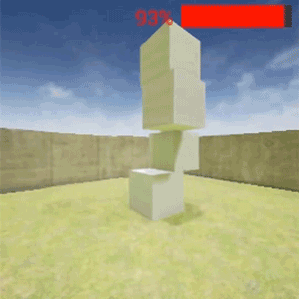Android Wear market is growing through a crazy phase where every month new wearables are making to the stores and constant innovation is helping in bringing more features to the devices. The latest version of Moto 360 sport shows remarkable improvement over its predecessor Moto 360 in terms of design and features. It is quick and concise of review of the Moto 360 Sport on basis of its first impressions, which is very amazing and impressive.
Moto 360 Sport hardware stands out from the crowd
The Moto 360 Sport comes with integrated silicone band, which is not changeable though. The internals of the Moto 360 Sport 42 mm model is similar to the earlier model with an addition of a GPS receiver. There is new display on this Smartwatch, which is named Motorola AnyLight Hybrid Display technology, which easily adapts with the environment.
It works like a traditional backlit display in low light situation and in the sunlight as front-lit reflective display. Motorola has provided an extended back button, which is located on the upper right side, and mic is located on the lower side. Motorola has carefully positioned the heart rate monitor on the center of the back. Motorola has covered the display with Gorilla Glass 3 surrounded by a ring of metal, which makes it more elegant.
Moto 360 Sport is a performance driven Sartwatch
The Moto 360 Sport runs on the Android Wear 1.3.0.x OS which is based on the popular Android 5.1.1 and it performs flawlessly with no glitches. It has a 300 mAh battery and runs o the 1.2Ghz quad core QUALCOMM Snapdragon 400 processor and has a 4GB of interNal storage with 512 MB of RAM.
Motorola has added some new fitness focused apps as well as a fitness watch face. These apps are called Moto Body and Moto Body Running while the watch face is called Sport, which provides status right in the top of display and a tap for accessing more options.
Users can easily view their heart rate, set goals for various exercises and get some interesting and accurate stats in the results at the end. Moto 360 Sport has a Start button near the middle of the display, which launches the Moto Body Running app where users can select different options before they start their run. Motorola 360 Sport is great at tracking the different exercises along with the calories count burned.
How Moto 360 Sport fares in tests?
Motorola Moto 360 Sport is very nicely designed and its performance is amazing even though very few tests were performed in short time. First of all this watch is incredibly responsive and it brings one of the best displays ever seen on an Android Wear watch. Motorola 360 Sport will be launching in US In January and it will come with a base price of $299.99. And if you are looking up a smart and a performance driven Android Wear in New Year then keep this watch in your buying list.








